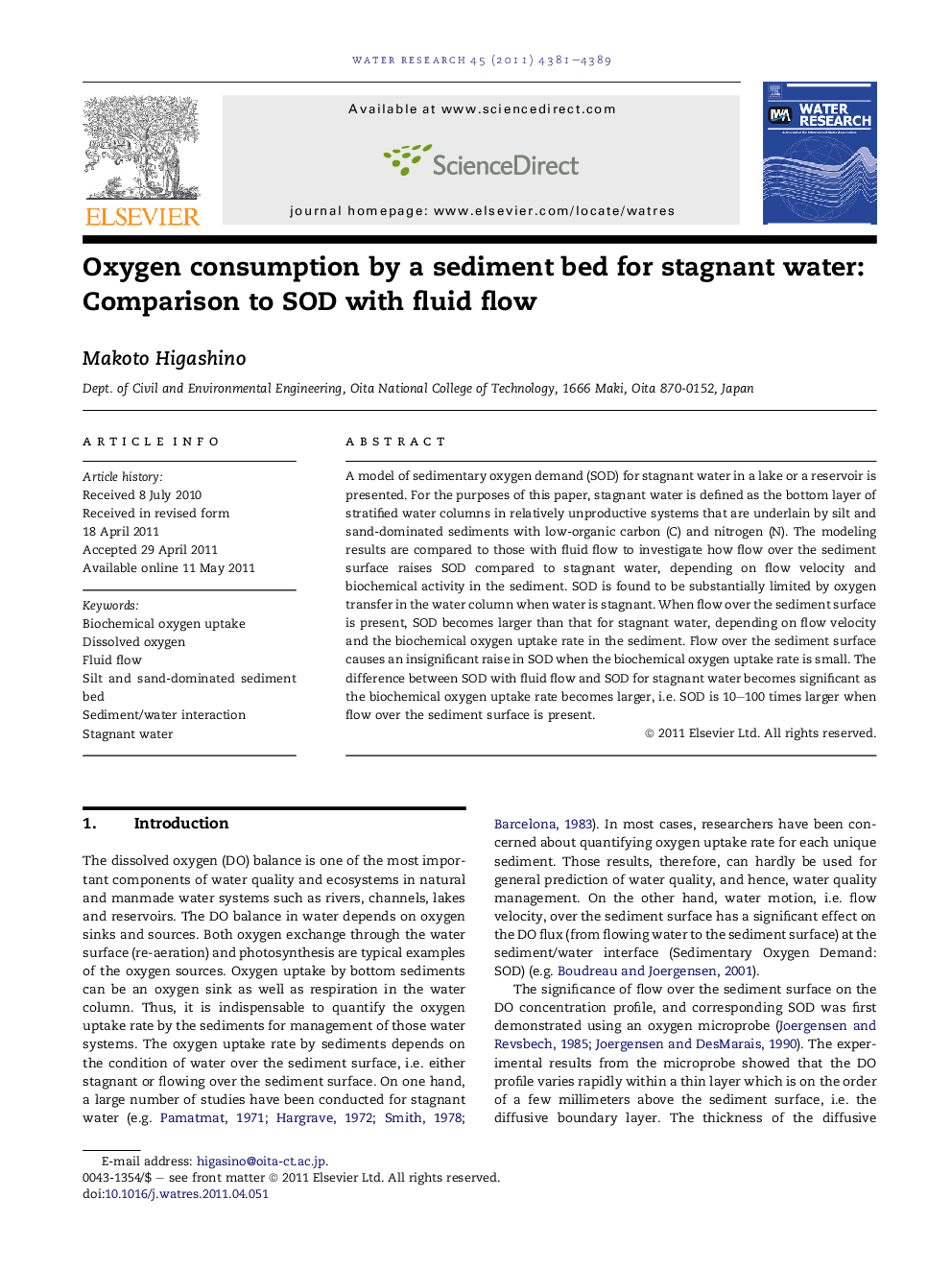| Article ID | Journal | Published Year | Pages | File Type |
|---|---|---|---|---|
| 4483296 | Water Research | 2011 | 9 Pages |
A model of sedimentary oxygen demand (SOD) for stagnant water in a lake or a reservoir is presented. For the purposes of this paper, stagnant water is defined as the bottom layer of stratified water columns in relatively unproductive systems that are underlain by silt and sand-dominated sediments with low-organic carbon (C) and nitrogen (N). The modeling results are compared to those with fluid flow to investigate how flow over the sediment surface raises SOD compared to stagnant water, depending on flow velocity and biochemical activity in the sediment. SOD is found to be substantially limited by oxygen transfer in the water column when water is stagnant. When flow over the sediment surface is present, SOD becomes larger than that for stagnant water, depending on flow velocity and the biochemical oxygen uptake rate in the sediment. Flow over the sediment surface causes an insignificant raise in SOD when the biochemical oxygen uptake rate is small. The difference between SOD with fluid flow and SOD for stagnant water becomes significant as the biochemical oxygen uptake rate becomes larger, i.e. SOD is 10–100 times larger when flow over the sediment surface is present.
► A model was developed for sedimentary oxygen demand (SOD) in stratified reservoirs. ► Modeling results were compared to those with fluid flow. ► When water is stagnant, SOD depends on the detention time. ► SOD also depends on the microbial oxygen uptake in sediments. ► SOD becomes much larger when flow over the sediment surface is present.
